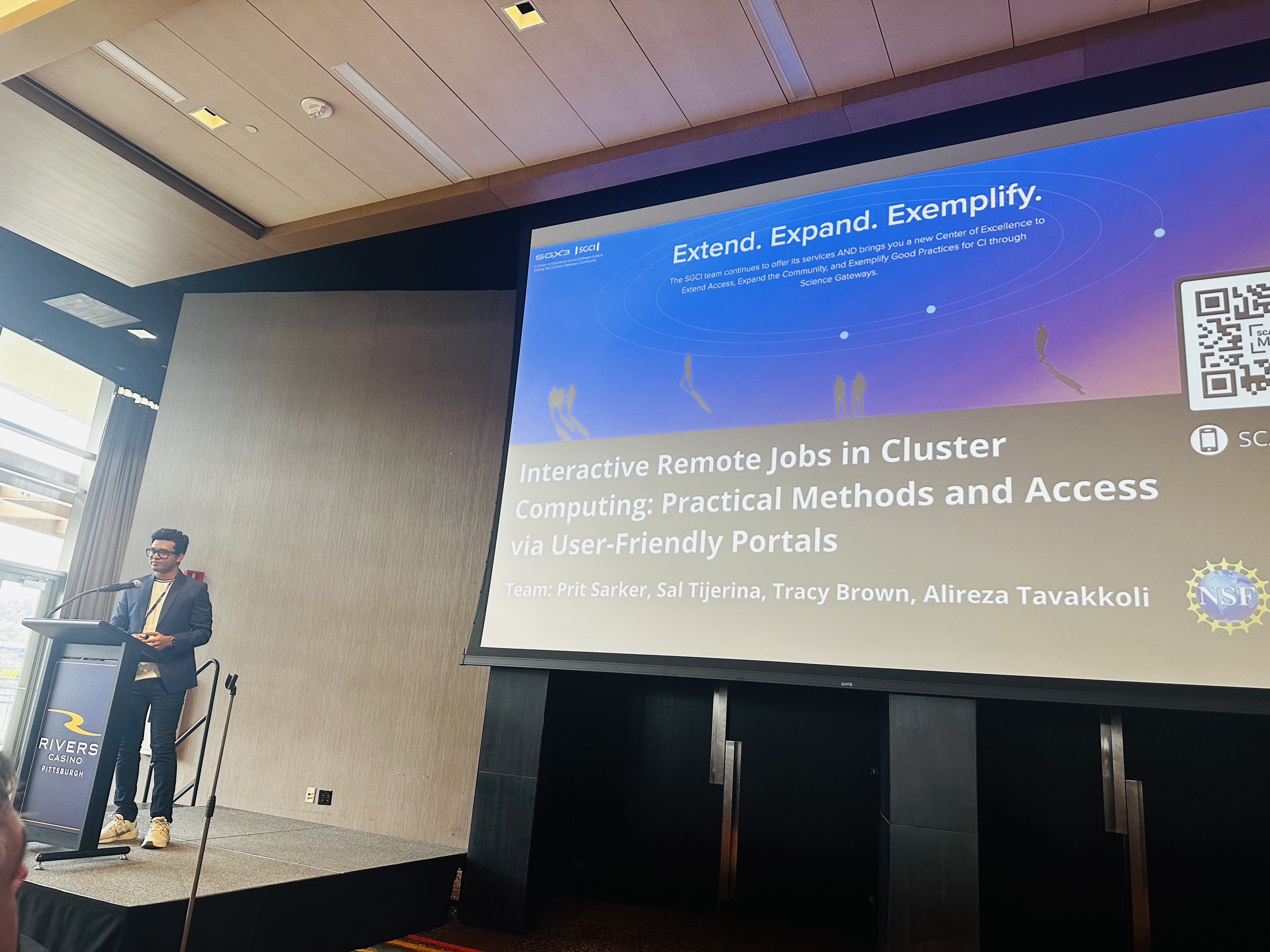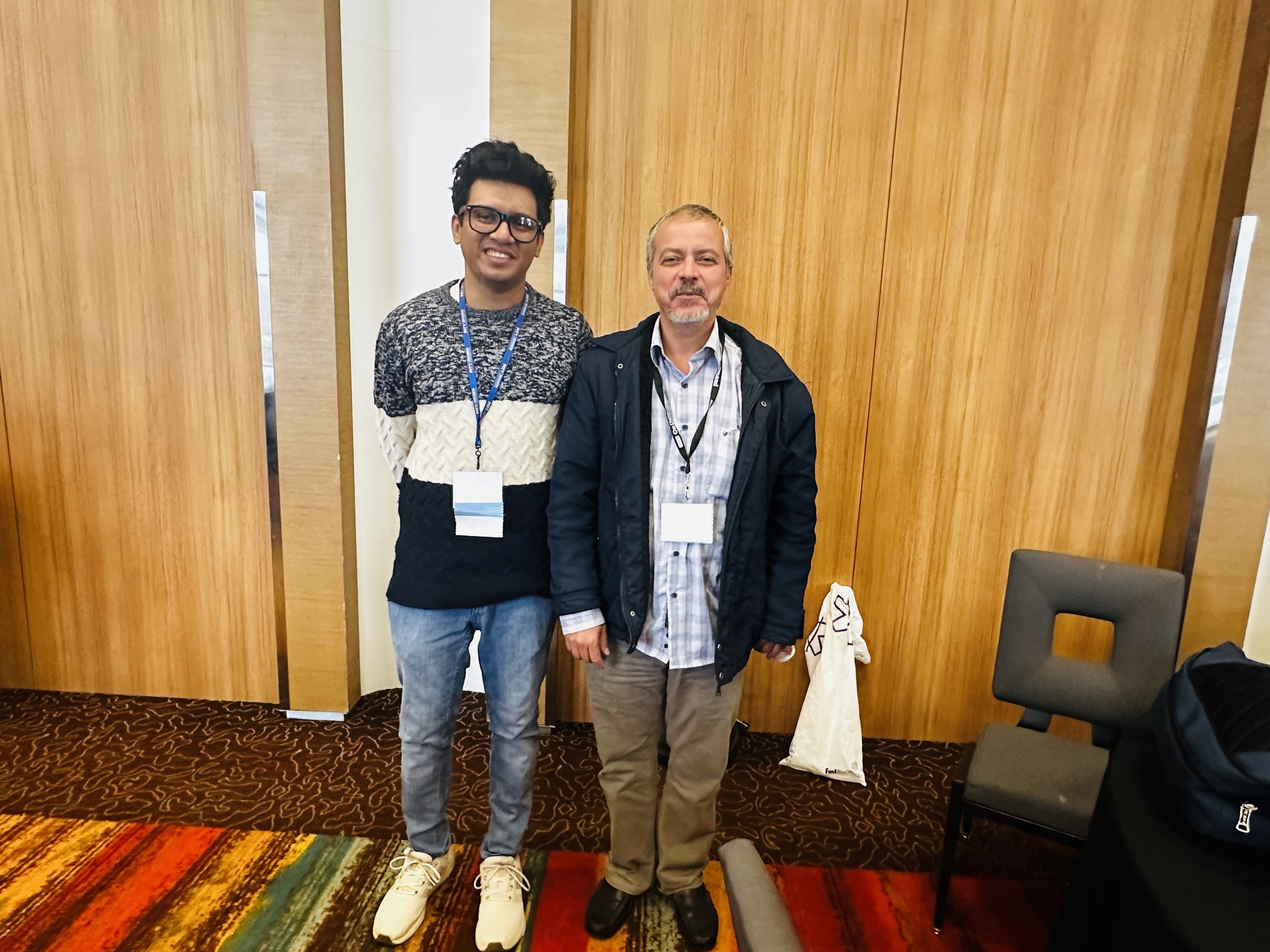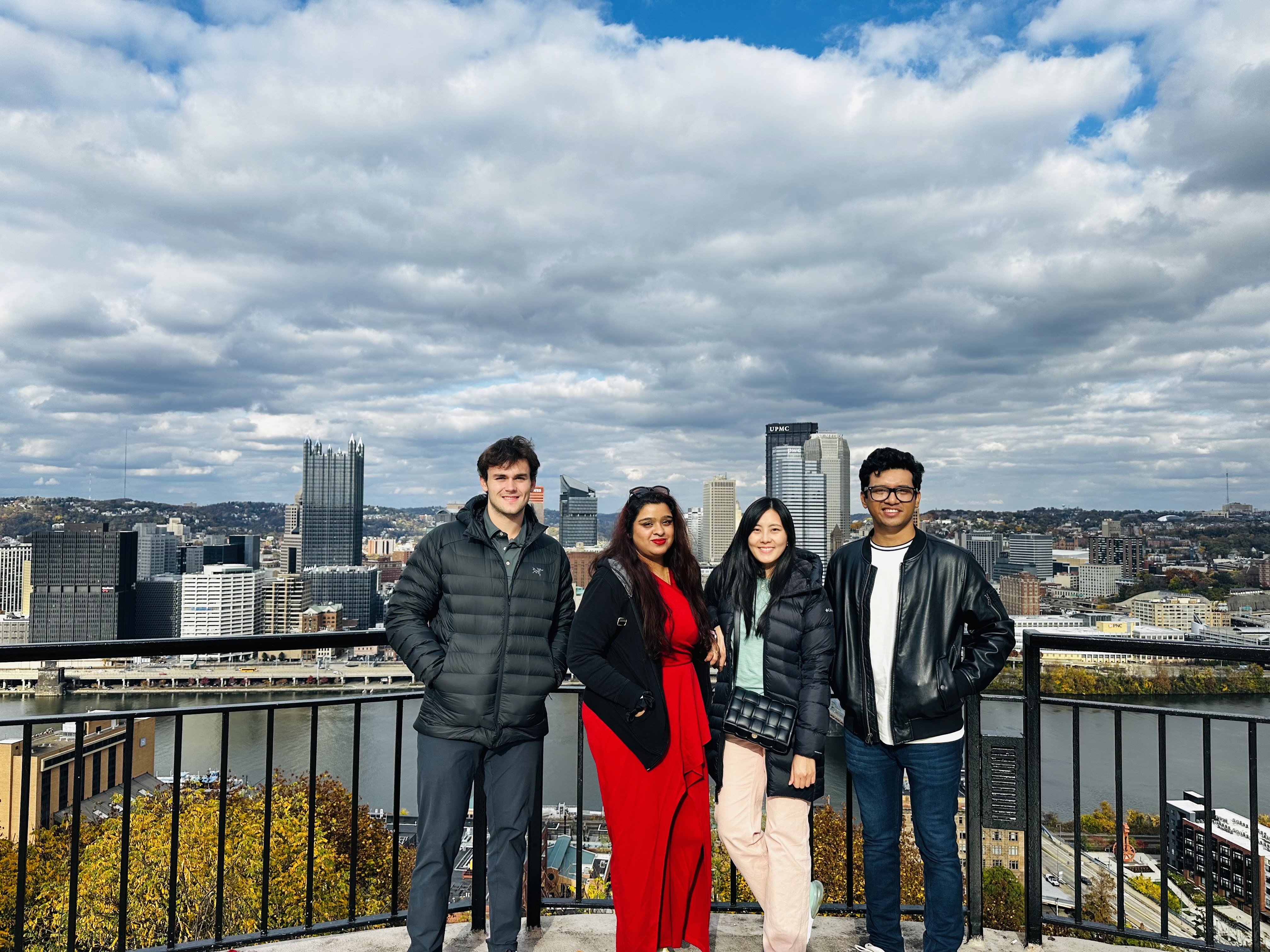Gateways 2023 Perspective: Prithul Sarker (Supported Student)
- Details
- Published on Monday, 15 January 2024 19:21
By: Prithul Sarker | University of Nevada, Reno

I was a graduate software developer intern for the summer of 2023 for SGX3 and worked at the Texas Advanced Computing Center (TACC) with the Web Mobile and Applications (WMA) team. Based on one of my projects during the internship, I had the privilege of attending the Science Gateways Annual Conference held in Pittsburgh, Pennsylvania, from October 30 to November 1, 2023. The conference was an extraordinary experience that gave me a deeper understanding of the branches of science gateways and witnessed the latest innovations in the field. In this article, I will share my journey and the insights I gained during the conference.
I arrived in Pittsburgh on a crisp autumn morning. After checking into my hotel, I headed straight to the conference venue, excited to find familiar faces and peers from TACC. The conference began with a warm welcome and introduction by the organizers, followed by the first keynote speech delivered by Alex Wright. His speech revolved around the concept of design thinking and its potential to make science more accessible to the general public. He presented several case studies and historical examples, highlighting the importance of user-centered design methods in shaping our approach to scientific knowledge sharing.
 Following the keynote speech, I had the opportunity to meet my mentor, Dr. Izzat Alsmadi, a renowned TEES Researcher and Associate Professor at Texas A&M University, San Antonio. His guidance and expertise throughout the conference were invaluable, and I felt grateful for the chance to learn from him. The rest of the day consisted of engaging presentations on utilizing science gateways in various research program sectors. These presentations offered unique perspectives on science gateways' versatility and potential impact. Later in the evening, we had the chance to explore fascinating posters displayed by undergraduate and graduate students, faculty members, and researchers. The poster session was an excellent platform for networking and exchanging ideas, and I was impressed by the creativity and dedication evident in each project.
Following the keynote speech, I had the opportunity to meet my mentor, Dr. Izzat Alsmadi, a renowned TEES Researcher and Associate Professor at Texas A&M University, San Antonio. His guidance and expertise throughout the conference were invaluable, and I felt grateful for the chance to learn from him. The rest of the day consisted of engaging presentations on utilizing science gateways in various research program sectors. These presentations offered unique perspectives on science gateways' versatility and potential impact. Later in the evening, we had the chance to explore fascinating posters displayed by undergraduate and graduate students, faculty members, and researchers. The poster session was an excellent platform for networking and exchanging ideas, and I was impressed by the creativity and dedication evident in each project.
On the second day, I gave a brief presentation on the future of portals, focusing on how interactive apps would revolutionize the user experience. During the lunch break, a group of us ventured out to explore the beautiful city of Pittsburgh. We rode the iconic Duquesne Incline, a historic cable car that offers breathtaking views of the city skyline, and walked along the scenic roads of Mount Washington. The sightseeing excursion was refreshing and allowed us to bond over shared interests and experiences. We enjoyed a delightful dinner in the evening, accompanied by a captivating magic show with a Halloween theme. The magician's tricks and illusions entertained and amazed us, creating a festive atmosphere that brought everyone together.
The conference's final day had a collaborative session where participants were encouraged to brainstorm and develop science gateway concepts based on their individual ideas. Working alongside others, I experienced the power of collective creativity and problem-solving. The session was an enriching experience that fostered collaboration and learning among the attendees.
As the conference drew to a close, I listened to many thought-provoking talks and relished our remaining time together. Before long, it was time to bid farewell and return home. Attending the Science Gateways Conference was an enlightening experience that broadened my horizons and deepened my understanding of the incredible work in the field. The main takeaway is that science gateways hold immense potential to bridge the gap between scientists, researchers, and the general public, promoting collaboration and advancing scientific discovery.